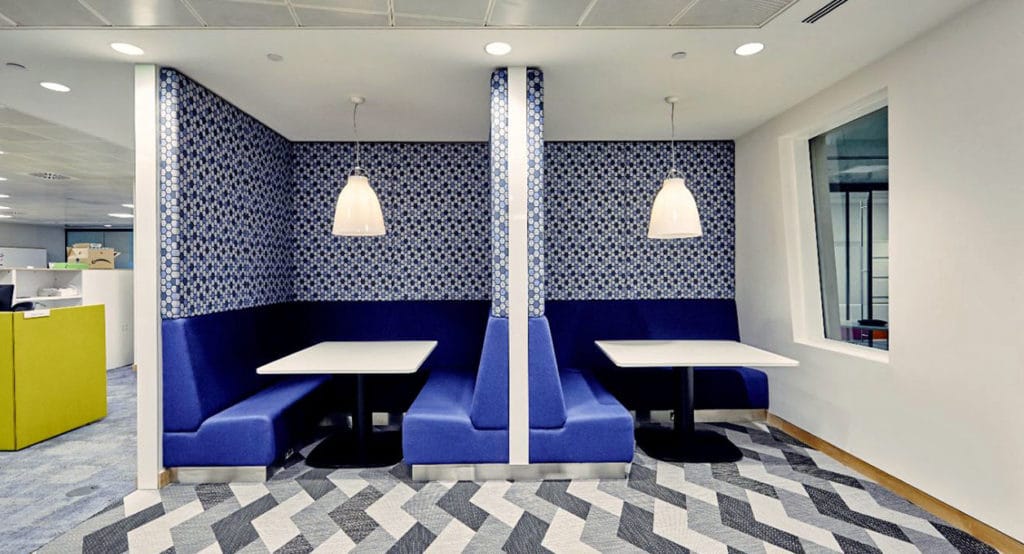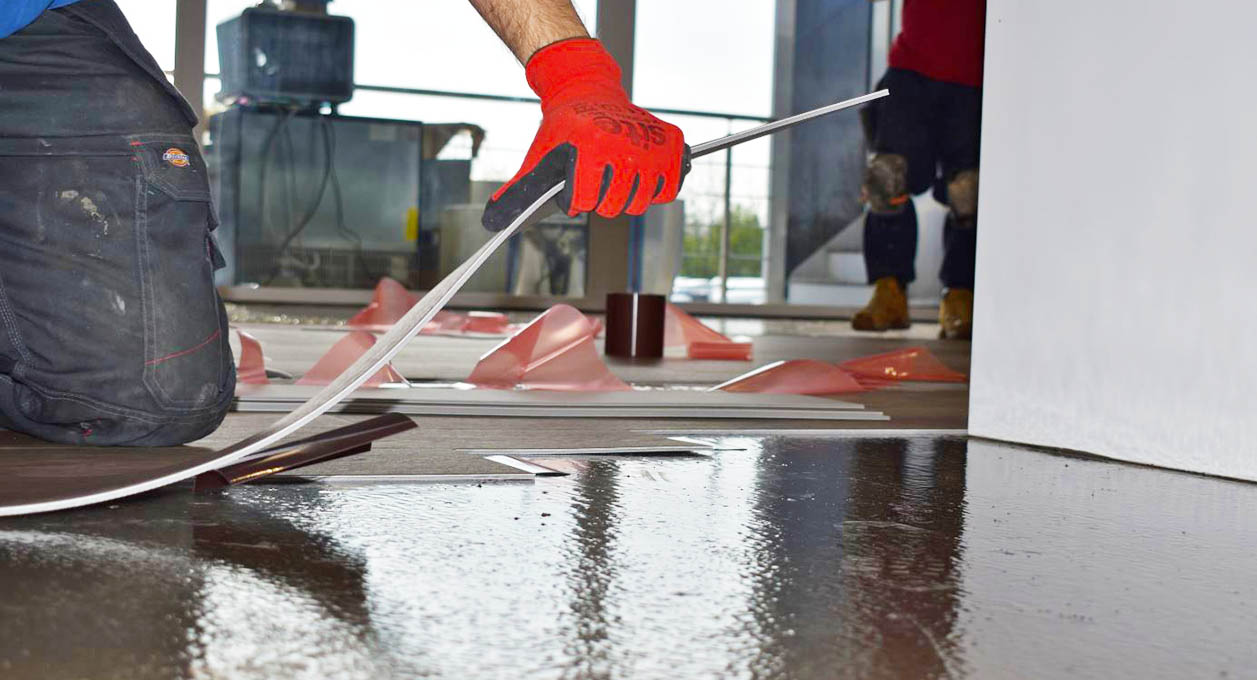We Brits spend around £30bn on household goods and improvements every year. It’s undoubtedly already a huge industry. But this year, under pandemic-induced lockdown and a large portion of us working from home or furloughed, it looks set to grow further. Many of us have taken this time to improve, makeover and/or renovate our homes. So much so that online sales of building materials in the first half of March 2020 saw demand at record levels, with up to 48% year-on-year growth.[1] Time spent doing DIY increased by a massive 147%.[2]
This shows no sign of abating, especially in light of Chancellor Rishi Sunak’s stamp duty holiday. In the weeks following, Rightmove and Housing Today reported a 15 per cent increase in house sales; buyer enquiries were 75% higher in July than a year ago, and housebuilders’ shares soared. [3] Homeowners on the move will be looking to makeover their current homes to help with the sale. Others will already have an eye on making changes to their new home.
We caught up with IOBAC Ltd.’s CEO, Paul Woolvine, to discuss why now is as good a time as any to re-evaluate the sustainable flooring solutions we choose.
Now is the time for change
“The UK government has already set its stall out to ‘build, build, build’ its way to recovery, which points to what is likely to be a huge increase in demand for building materials, including flooring solutions. It feels like a transformative time for the built environment; an opportunity to do things differently and better than before. And that’s what we’re all about at IOBAC. Why not make the flooring solution you choose – whether you’re a housebuilder, homeowner, or flooring contractor – an inherently more flexible and sustainable one?”
Sustainability from the ground up
The COVID-19 pandemic has brought the environment and what we’re doing to it into sharp focus. There’s no doubt it was front of mind for the Construction Leadership Council (CLC) when it wrote and published its recent Roadmap to Recovery, an industry recovery plan for the UK construction sector. Sustainability and a decarbonised society are placed right at its very heart, proven with the inclusion of this statement under its key outcomes and benefits:
“Reducing carbon emissions and improving the sustainability and resource efficiency of the construction and built environment sectors and making measurable progress towards delivering net zero carbon.” [4]
“While the CLC’s report is encouraging, sustainability has, unfortunately, always been at the mercy of market forces,” continues Paul. “Stakeholders too often opt for traditional solutions deemed ‘cheaper’ than newer, more innovative solutions. It’s these market forces that risk stifling the sustainable innovations that the construction and housebuilding industry so desperately need. Now is an especially important time to keep green building principles at the forefront of everyone’s mind.”
Indeed, the need to ‘build back better’ has been addressed by prime minister Boris Johnson and the government’s Race to Zero campaign, as well as by the CLC’s Roadmap to Recovery. Specific details are, however, currently sparse.
“There are a multitude of materials that need to be properly governed if vital green benchmarks are to be hit,” says Paul. “Concrete is often cited as the construction industry’s ‘dirty’ addiction, but in our world, traditional flooring solutions – ones that are unsustainable to manufacture, require adhesives to affix, and are difficult to recycle – are the problem.”
Greater flexibility and design freedom
In the UK, on average, we decorate our living room every 25 months, our bedroom every 29 months, dining room every 37 months, and hallway every 45 months. Amazingly, a quarter of all UK homeowners admit that their home is in a constant state of redecoration. [5] Over a lifetime, that’s a lot of redecorating.
Paul comments: “Fashions and our own tastes and needs are constantly evolving and it can be an upheaval each time we redecorate. It can also be expensive and time-consuming. But it doesn’t have to be that way. If people had the option to change their flooring quickly and easily, by themselves, in just two to three hours, how many more would opt to do it? They may even opt to do just that rather than redecorate an entire room. Add to that the options to stow away the flooring that’s been uplifted for re-use, recycle it in an environmentally-friendly way, or simply just swap some sections that are more worn than others, and you’re left with a transformative solution to what is an old problem.”

The solution?
IOBAC claims to offer a solution to the issues Paul outlines above. It comes in the form of its Ezy-Install underlay system, incorporating a unique dual-grip technology that enables “faster, cleaner and easier flooring installations.”
“Ezy-Install is what we call our dry-laid magnetically receptive underlay,” explains Paul. “It takes away all of the messy, time-consuming issues that arise with traditional solutions. There’s minimal sub-floor preparation needed, you simply roll out the underlay and cut to size. It is waterproof, naturally anti-microbial, easily cleanable, durable and manufactured using recycled rubber from old tyres. It’s perfect for reuse time and again and ticks all of the sustainability boxes. Combining a metallised, magnetically-receptive base with a high-grab dry adhesive tack, it utilises dual grip strength for optimum hold between underlay and surface flooring. The underlay adhesive is plant-based VOC-free resin, manufactured predominantly from renewable castor oil.”
The final step is to fix magnetically-backed tiles into place – much like putting a fridge magnet on a fridge – or attach a standard backed tile using IOBAC’s MagTabs.
“MagTabs are simply little magnetic squares that transform ordinary floor coverings into magnetic ones. Magnetic on one side and self-adhesive on the other, they work by locking tiles tightly together in two dimensions – horizontally and to the Ezy-Install underlay vertically.
As IOBAC’s flooring system is wet adhesive free, surface tiles are uncontaminated when uplifted and can therefore be easily recycled or reused, unlike tiles fixed with adhesive which are often difficult to uplift and recycle.
Things are hotting up
The government’s recent Green Deal announcement is set to help homeowners make energy-saving improvements to their home and find the best way to pay for them. As you would expect, heating and, more specifically, underfloor heating, is one of the improvements listed under the Green Deal criteria. This is, of course, framed by the wider context of the UK government’s target to bring all greenhouse gas emissions to net zero by 2050.
More efficient heating solutions will undoubtedly have a central role to play in reaching this objective. After all, almost 40% of all human greenhouse gas emissions in the world come from buildings, with more than half of these from residential properties.[6] The fact remains, however, that underfloor heating can still be overly complicated and excessively expensive, which is why it’s another part of the flooring world that IOBAC is looking to transform.
“Our heated flooring solution was developed to overcome some of the issues commonly associated with conventional electric mats and water-based underfloor heating systems,” explains Paul. “Underfloor heating is still thought of as a costly, luxury option. And a disruptive, complex option at that. It’s also complicated and time-consuming to remediate any issues with traditional systems and, vitally, they’re not as efficient to run as expected. They often have long heat up times and no option for renewable energy inputs.”
IOBAC aims to offer a more energy-efficient and cost-effective solution.
Paul says: “Crucially, our solution is non-disruptive. There’s no disturbance to existing pipe and/or electric system and adjusting floor height isn’t an issue as our solution is just 0.5mm thick. On top of that, it’s easy to remediate by simply removing the floor tile and underlay. This special heated version of the Ezy-Install Underlay utilises super-conducting graphene technology to create an amazingly efficient underfloor heating solution. Simply lay the heated Ezy-Install underlay as before, connect to a power source in the skirting board and install magnetic flooring tiles on top.
“Our aim with this solution is to make it three things: non-disruptive (which we’ve touched on), cost-effective and sustainable. In terms of cost-effectiveness, it’s highly efficient to run and quick to heat up to 27ᴼC, not to mention the far-reduced install and future remediation costs. Sustainability wise it can be powered by renewable supply (either DC or AC), it’s water-based with 100% solid coatings and made using recycled additive.”
There is also a perhaps lesser-known advantage – and particularly pertinent given the current health crisis – to this solution: health benefits. “The solution creates radiant infrared heat, which is said to have numerous health benefits, from pain relief, reduction of muscle tension and improved circulation, to boosting of the immune system and lowering of blood pressure. It is even thought to be able to help to fight infections and inhibit airborne microorganisms found in RNA viruses, including coronaviruses, by stimulating the body’s metabolism and production of white blood cells.”
A better way forward
It does feel like a transformative time for the built environment. Demand for building materials and flooring solutions will continue to be high and homeowners, housebuilders and flooring contractors will be faced with numerous building material options. As Paul said, perhaps it is time for society to opt for “newer, more innovative solutions”. It doesn’t have to be a new normal, as has been quoted so often in recent times. Rather, the building materials and flooring solutions we choose now can help contribute to a better normal.
For more information about IOBAC’s solutions, visit www.iobac.com.
Now available to buy at new sister website: www.floorplay.info.
[3] Housing Today, Post lockdown surge in house prices, reports Rightmove
[4] Construction Leadership Council, Roadmap to Recovery
[5] House Beautiful, This is how often we decorate our living room, hallway and bedroom
[6] Low Carbon Houses, Catapult Future Cities
See our feature on Flexible Flooring: The Foundation of Future Office Design




